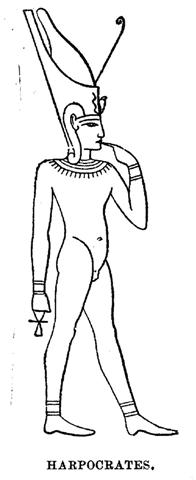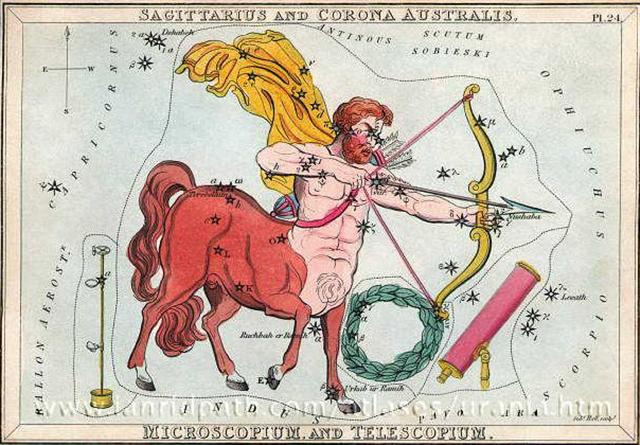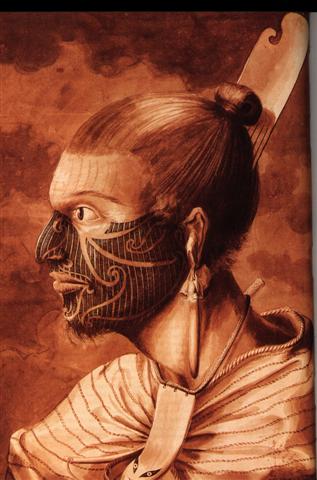5. Furthermore, the clavicle sign could perhaps cast some light on the similarly formed 'lock of hair' close to the right side ear of the early morning Sun (cfr at Tamaiti)::
A lock of hair goes well together with a little key (clavicula). In the night there could have been 2 locks: ... It [the lunar mansion Al Baldaah] was also Al Kilādah, the Necklace; and Al Udhiyy, the Ostrich's Nest, marked by our τ, ν, ψ, A, and ζ; while the space between this and the preceding mansions was designated by Al Bīrūnī as 'the head of Sagittarius and his two locks' ... The star Manubrium does not arrive at Kaus Medius (δ) but later, higher up and above the right hand of the Archer, above his left 'armpit', where his fist is drawing back the string powerfully (forming an angle of more than 90º):
The 'grip' (ο Sagittarii) is at the face of the Archer, close to his right ear. I suspect the vertical 'lock' could be the place of the Manubrium star.
The eye of the Archer (Ain al Rami) was, according to my interpretation of the G text, rising heliacally in 'May 24 (144), 2.6 days earlier than Manubrium (at Ga8-22). The distance from Ain al Rami to the 19h line is exactly 3 days (= 289.2 - 286.2). In Ga8-22 sky (ragi) is visualized at the top of the glyph, possibly having 'alighted in the Tree' (taken command): ... Eridhu, or Eri-duga, the Holy City, Nunki, or Nunpe, one of the oldest cities in the world, even in ancient Babylonia, was that kingdom's flourishing port on the Persian Gulf, but, by the enchroachments of the delta, its site is now one hundred miles inland. In its vicinity the Babylonias located their sacred Tree of Life ... Here (in 'May 27) 'night sky' seems to have taken the place of the 'daytime head', inverted at the bottom. Someone has turned the hourglass of time upside down. It is hard to avoid thinking about the pair of spears which Tane had: ... Tane (the god of trees and light) indeed had 2 spears:
From the words used by Metoro it is clear that my glyph types ragi and nuku refer to sky respectively to earth:
Possibly Ga8-22 depicts the spear which pierces the cloth of night in order to let Sun enter. Although Sun should enter later. This time after 'midnight' is an interval, presumably named puka (puta):
A rei puta was a whale bone 'saviour of life':
The picture is from D. C. Starzecka, Maori Art and Culture, and shows the tattooed son of a Maori chief, with his rei puta hanging down (over his manubrium).
Beyond Nunki lies the 'Sea' and presumably a perilous voyage, maybe in the interior of a 'Whale':
There is a harp in front of Cetus, which is in harmony with my suggestion of a connection between such instruments and the separation of Sky and Earth in spring. "Psalterium Georgii or Georgianum, sometimes Harpa Georgii, was formed in 1781 by the Abbé Maximilian Hell, and named in honor of King George II of England. On the Stieler Planisphere it is Georg's Harfe, from Bode's Georg's Harffe. It lies between the fore feet of Taurus and the River Eridanus, its stars all very inconspicious, unless it be the 4½-magnitude ο² Eridani, which was borrowed for its formation. But the loan has been returned, for Psalterium is not now recognized by astronomers." (Allen) |












